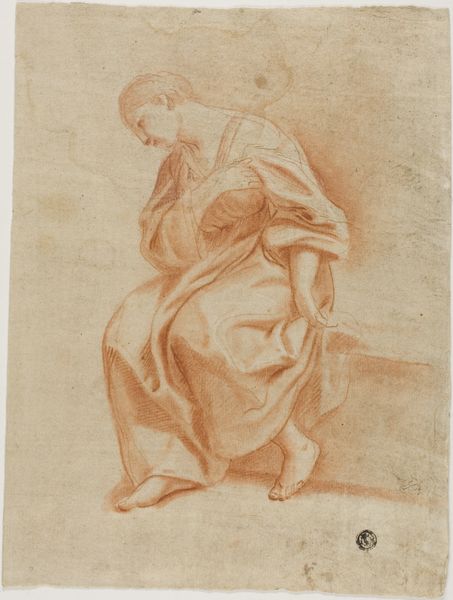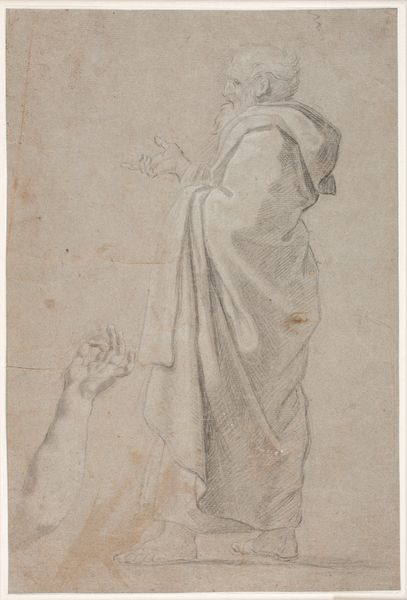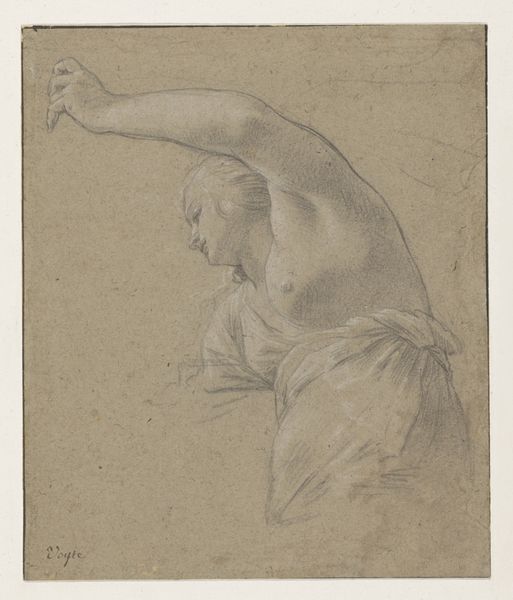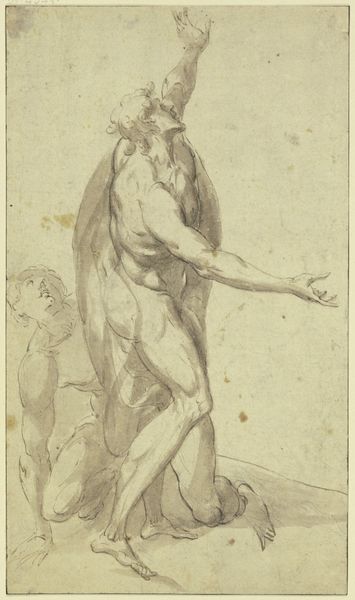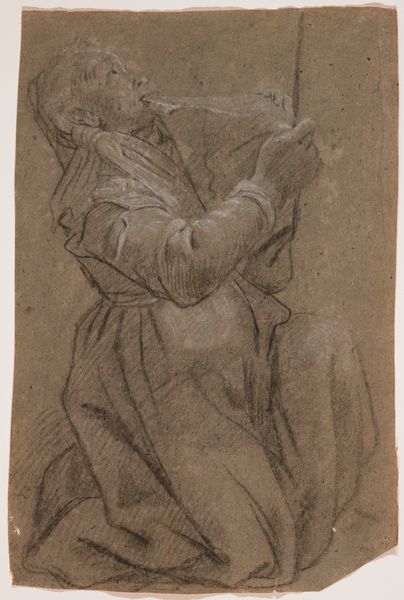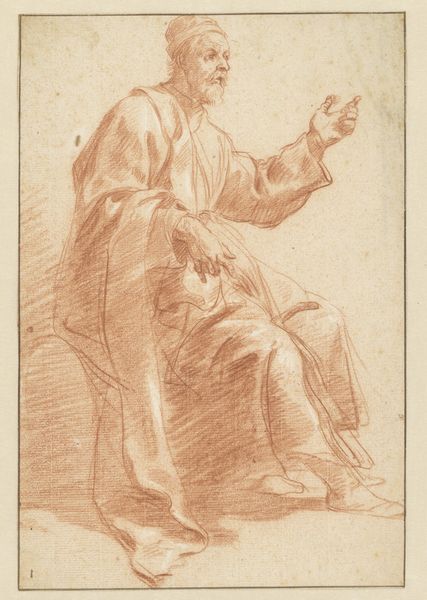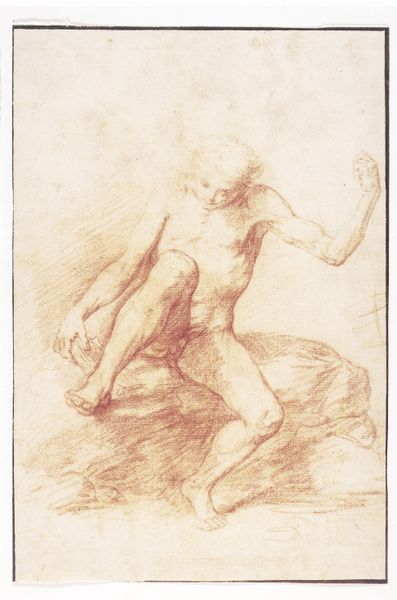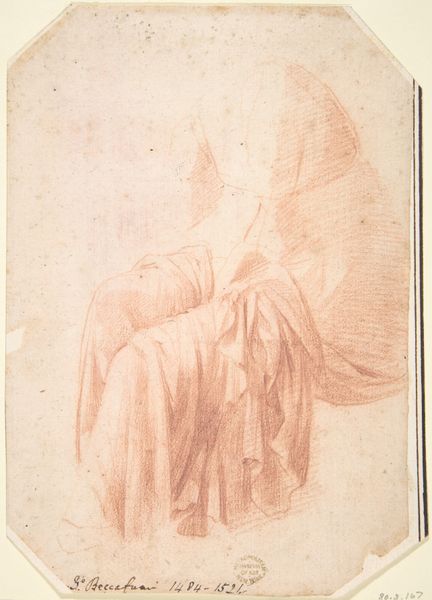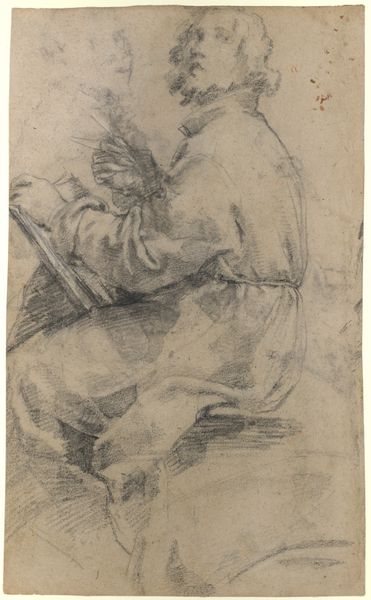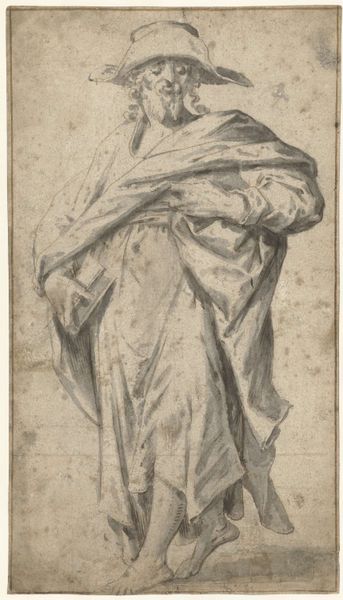
Study of Kneeling Figure from the Back 16th-17th century
0:00
0:00
drawing, dry-media, pencil, charcoal, black-chalk
#
portrait
#
pencil drawn
#
drawing
#
baroque
#
charcoal drawing
#
figuration
#
dry-media
#
pencil drawing
#
pencil
#
charcoal
#
black-chalk
Dimensions: 9 3/16 x 6 3/4 in. (23.34 x 17.15 cm)
Copyright: Public Domain
Curator: This drawing, created in the 16th or 17th century, is entitled “Study of Kneeling Figure from the Back,” and it's attributed to Giulio Cesare Procaccini. It's currently housed here at the Minneapolis Institute of Art. Editor: My initial impression is one of quiet desperation. The charcoal and chalk create such a dramatic contrast between light and shadow that even though we only see the back of the figure, his plea feels immediate. Curator: Yes, and look how that combination of black chalk, charcoal and pencil gives volume and depth to the drapery. Notice also the hint of a halo – a clear signifier of holiness or saintliness. Consider the symbolic implications: a figure, humbled in devotion, draped in what appears to be voluminous fabric, suggesting concealment or perhaps the weight of divine power. Editor: It makes me think about the labor involved in its creation. Procaccini wouldn’t have just picked up any old charcoal. There's the careful selection of materials, the grinding of the chalk, all pointing to an artisan deeply invested in the means of production, carefully building layers of meaning through materiality. Curator: Indeed, that physicality is essential. Beyond the mere representation of a kneeling figure, consider the historical context of kneeling as an act of submission or reverence. What psychological or spiritual meaning can be attributed to the image of someone voluntarily surrendering in this posture? Editor: It’s fascinating how he achieves such a sense of movement with relatively simple means. There is a strong social component, isn't there? These materials weren't accessible to everyone, implying patronage and class. What were these drawings for? A wealthy collector's pleasure or preliminary sketches? Curator: Perhaps a preparatory sketch for a larger composition or a demonstration of skill and understanding of human anatomy and emotion. Either way, this work allows us to connect with a moment of intense emotion frozen in time, rendered by an artist deeply attuned to the symbolism of posture and drapery. Editor: Looking at the cross-hatching and varied pressure in the strokes, I see not only religious devotion but a physical encounter with materials, connecting labor, devotion, and social structures. The artwork reveals so much. Curator: Agreed. It provides a layered narrative. Editor: Well said. A confluence of making and meaning!
Comments
No comments
Be the first to comment and join the conversation on the ultimate creative platform.
